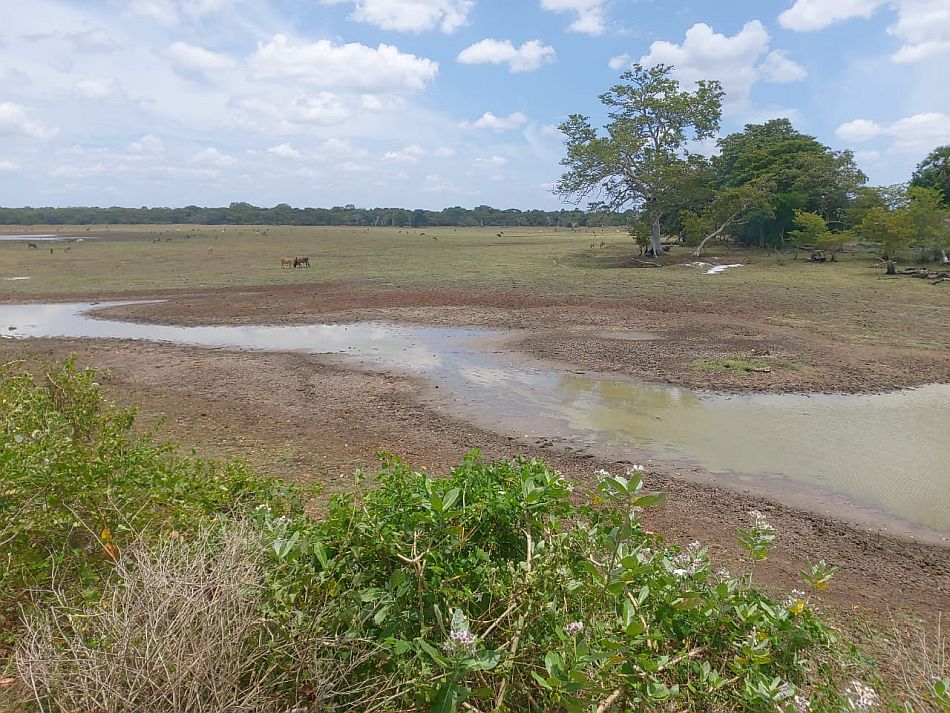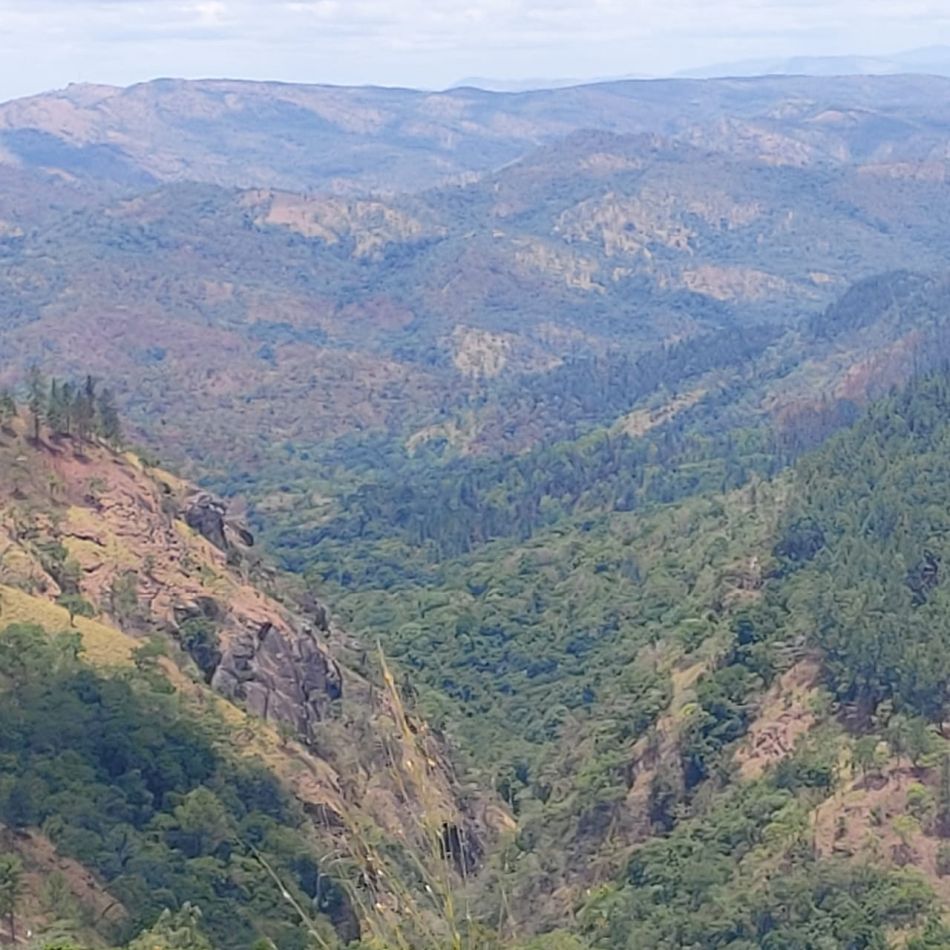By: Victoria Blymier, Princeton in Asia Fellow
Drought struck the North, North Central and Eastern Provinces of Sri Lanka this August and September generating cascading consequences for the entire island. Drought mapping technology and anticipatory action plans could help to manage disaster risk and mitigate the damage.

As the western region of Sri Lanka experiences heavy annual rains from August through October, known as the Yala monsoon season, the north and east are in their dry season. This year, received precipitation fell far below average.
IWMI’s drought mapping found that major water reservoirs were filled to less than 55% of their storage capacity, and smaller tanks were completely dried up.
The maps, produced through the South Asia Drought Monitoring System (SADMS) tool, measures drought severity on agriculture at the regional and district level. The cloud-based hydrological model forecasts drought as early as 10 days, one month and three months in advance, giving Sri Lanka’s decision makers time to take early action.
“Knowing drought timing and intensity is important for national and provincial governments,” explained Dr Giriraj Amarnath, IWMI Principal Researcher and SADMS project lead. These maps could be presented as evidence to multilateral donors to gather pledges of humanitarian assistance.
If rice yields decline, government officials may be prompted to secure rice imports or offer subsidies to farmers in need. Limited water tank storage could shrink next season’s harvest as well.
But without early action, many segments of society and the ecosystem will suffer—and not just agriculture, Dr Giriraj warned.
Colombo can expect to see increases in rice and vegetable prices due to a smaller harvest. These price hikes will hurt low-income groups the most, such as daily wage laborers.
Humans won’t be the only ones hungry for rice. The low reservoirs and dry vegetation may push wildlife into areas with moisture and food; neighboring rice paddy farms could be the places where animals search for their next meal, perpetuating dilemmas like Sri Lanka’s deadly human-elephant conflict.
Dry forests also increase the risk of wildfires. Forest fires have already consumed dry vegetation in parts of Balangoda town, located in the Rathnapura district.

Drought affects entire ecosystems. Rivers, for example, need a minimum flow of water to support the species dependent on their environments. Their waters carry nutrient-rich sediment that supports biodiversity, and river basins are home to and source of drinking water for many species.
The AWARE Platform helps leaders manage disaster risk and take mitigating action
October 13th is International Day for Disaster Risk Reduction. In 2023, the United Nations Office for Disaster Risk Reduction is calling for action by “fighting inequality for a resilient future.”
To tackle climate-related disasters such as drought, the CGIAR Initiative on Climate Resilience, or ClimBeR, is developing awareness platforms (AWARE) for stakeholders to communicate and collaborate, building the nation’s capacity to take mitigating action against disaster. While SADMS collects data to offer decisionmakers, the AWARE platform provides the means for Sri Lanka to respond.
The platform recognizes the important role of governance capacity in anticipatory action: multiple ministries must coordinate to ensure an effective and timely response to extreme climatic events. Strengthened intergovernmental and cross-sectoral capacity is improving Sri Lanka’s ability to proactively combat several disasters, including flooding in the hill country.
ClimBeR is expanding AWARE to support the unique contexts of many countries. Recently, AWARE was co-launched in Zambia with the Disaster Management and Mitigation Unit of the Vice President’s Office on October 5th, and in Senegal with the National Agency of Civil Aviation and Meteorology on October 11th.
“With changes to water cycle and climate extremes, we need to move from today’s approach where we watch disaster and gradually respond to communities’ needs and mobilize funds,” Dr Giriraj emphasized. “CGIAR’s AWARE platform supports strengthened anticipatory action where we put in the best early warning information to support early action plans before disasters arrive and release the money to communities as soon as they need it.”

